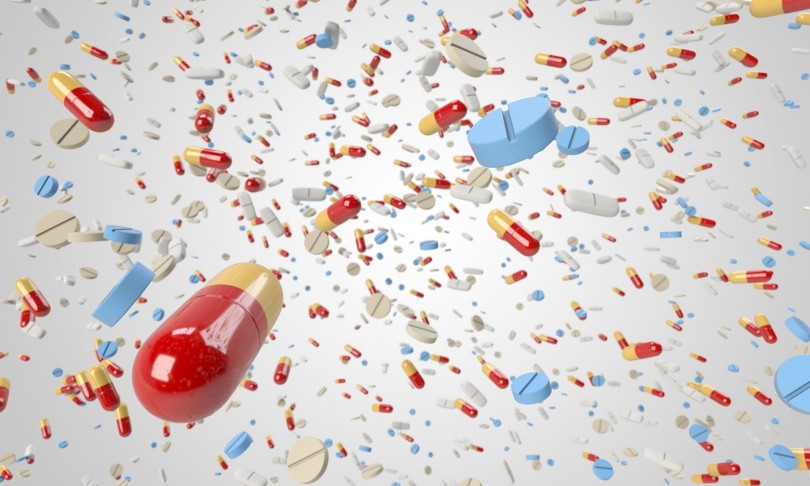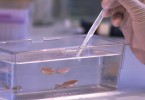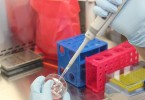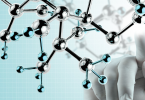15 min reading
“Woman killed by a superbug resistant to every available antibiotic” was on the cover of many newspapers worldwide in January. The victim, an american citizen in her 70’s, died in Nevada after contracting a bacterial infection resistant to all antibiotics available in the US. The antimicrobial susceptibility tests performed indicated the bacteria was resistant to 26 antibiotics.
During the years previous to her death the victim had multiple hospitalisations due to an unhealed femur fracture in India, a place in which multi-drug-resistant bacteria are more common than in the Western World. The most recent one was just a couple of months before returning to the US. She was infected with a superbug belonging to the group carbapenem-resistant Enterobacteriaceae (CRE), with a feared mutation called NDM-1 (New Delhi-Metallo-1). This was not the first time someone died from an infection with a multi-drug-resistant bacteria or superbug and, unfortunately, it will not be the last.
“Without policies to stop the worrying spread of AMR (antimicrobial resistance), today’s already large 700,000 deaths every year would become an extremely disturbing 10 million every year, more people than currently die from cancer”, says Jim O’Neill, the former Goldman Sachs chief economist and responsible for the AMR 2016 Review commissioned by the British government.
While antibiotics have revolutionised medicine in the 20th century, we are now heading towards a new era, the Post-Antibiotic Era, where we can no longer count on them as our allies. It is a fact, antibiotic resistance is now one of the biggest threats to global health. One year after the AMR report came out, last month the World Health Organization (WHO) joined this international awareness movement and published its own report. They released a list of the 12 families of bacteria posing the greatest threat to human health. A list that “is not meant to scare people about new superbugs, but to signal to researchers and pharmaceutical companies what their priorities should be”, explained Marie-Paule Kieny, WHO’s assistant director-general for health systems and innovation, at the press conference. So yes, it’s a reality and we cannot turn our backs on it!
But, how and why did we get to this situation? What can be done to change O’Neil’s alarming calculations?
Here are a few key points:
First, antibiotic resistance is a natural phenomenon. Bacteria are tiny but ‘intelligent’ organisms. They are ‘machines’ that ‘fight’ and compete with other microbes to survive. The ones that are able to survive under certain conditions (that could be antibiotic  pressure for example) will replicate and ultimately dominate over the ‘less strong’ ones. Bacterial populations are always evolving and re-adapting to the environment. These capacities could be intrinsic to a certain group of bacteria, but may also be acquired by ‘luck’ due to genetic mutations or acquisition from another bacterium. So, that’s nature and it will always be like this. We just need to be ‘smarter’ than bacteria.
pressure for example) will replicate and ultimately dominate over the ‘less strong’ ones. Bacterial populations are always evolving and re-adapting to the environment. These capacities could be intrinsic to a certain group of bacteria, but may also be acquired by ‘luck’ due to genetic mutations or acquisition from another bacterium. So, that’s nature and it will always be like this. We just need to be ‘smarter’ than bacteria.
To be able to fight against this constant and fast evolution of bacteria, one would need to be continuously producing new antibiotics. Here’s the second important point: the rate at which antibiotics are being discovered and approved is way too low. In the last decade, there were only 9 new antibiotics approved, compared to 29 in the 1980s and 23 in the 1990s. “From approximately 20 traditional pharmaceutical companies investing in antibiotic research in the 1980s, there are now only approximately 5 with significant active internal research programmes: Novartis, GSK, Roche, Sanofi and Merck” reports Dr Mark Blaskovich, Program Coordinator, Community for Open Antimicrobial Drug Discovery, in a recent issue of Essays in Biochemistry.
We are running out of weapons. But why? It seems one of the main reasons is money. Essentially, antibiotics venture is not as profitable for pharmaceutical companies as are other drugs, like the ones for chronic diseases such as cancer or cholesterol. “This discrepancy is highlighted by the development pipeline: as of March 2015 there were only 28 antibiotics in Phase II/III clinical testing, compared with 504 oncology drugs.”
How can this be changed? “If we leave it to market forces alone, the new antibiotics we most urgently need are not going to be developed in time.” said Kieny (WHO). Thus, there’s an urgent need for new and appealing policies and incentives to boost R&D in this sector. This is in fact one of the recommendations of both ARM and WHO reports. There are several global initiatives that are currently supporting research in this field. One of the most recents is CARB-X, a new US-UK public-partnership funded by BARDA and Wellcome Trust. Announced last month, they are investing an initial $24 million in 11 biotech companies to accelerate the development of new-saving antibacterials and diagnosis aimed at treating superbug infections. A great example that we hope will serve as an example and inspiration for others.
The third key point: the widespread misunderstanding about what antibiotic resistance is. As Jim O’Neil well explains in his interview for Wired UK: “in our generation we’ve been brought up to believe that antibiotics are this magical solution. People treat them like sweets. We need to communicate to seven billion humans around the world that yes they are fantastic but only if correctly used. Not many people realise that”. There’s an urgent need to educate people. As the WHO global survey revealed “people are confused about this major threat to public health and do not understand how to prevent it from growing”. Check out three of the most common misconceptions about antibiotics.
Finally, it is also important to re-direct efforts to find alternative ways of fighting this global threat. One of them could be vaccines. Vaccines would prevent bacterial infections and thus lower the demand for antibiotic treatments and consequently slow the rise of drug resistance.
“Non-antibiotic strategies are just as important, such as developing vaccines or probiotic therapies to prevent infections, as they can help to reduce the overuse of antibiotics. They will never completely replace antibiotics, but can help to preserve our existing antibiotics so they still work when needed.”, says Blaskovich.
More on that: check out Vaxdyn’s campaign:
http://www.capitalcell.net/investment/vaxdyn76/
Stay tuned!









